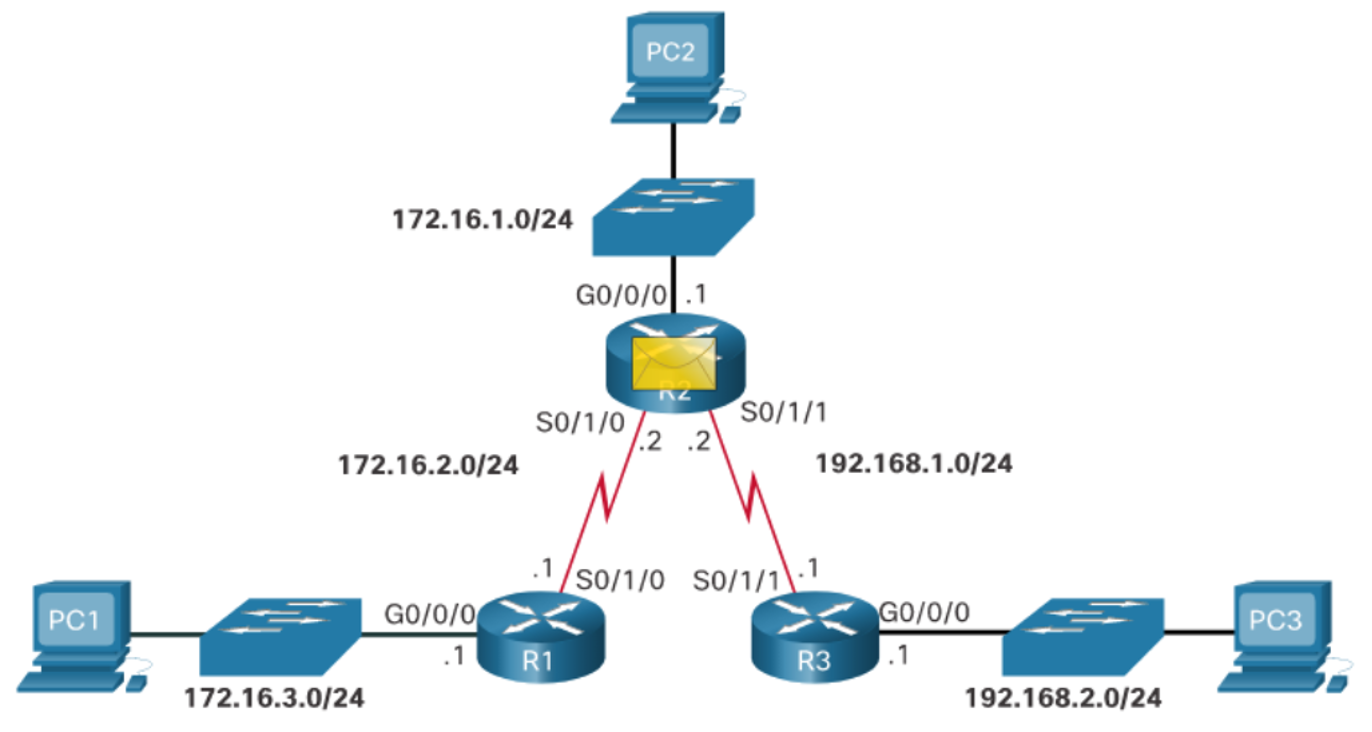
About Lesson
Troubleshoot Static and Default Routes
Module Objective: Troubleshoot static and default route configurations.
| Topic Title | Topic Objective |
|---|---|
| Packet Processing with Static Routes | Explain how a router processes packets when a static route is configured. |
| Troubleshoot IPv4 Static and Default Route Configuration | Troubleshoot common static and default route configuration issues. |
16.1 Packet Processing with Static Routes
Static Routes and Packet Forwarding
- PC1 addresses a packet to PC3 and sends it to the default gateway address.
- When the packet arrives on the R1 G0/0/0 interface, R1 decapsulates the packet and searches the routing table for a matching destination network entry.
 If the destination IP address:
If the destination IP address:
- Matches a static route entry, R1 will use the static route to identify the next-hop IP address or exit interface.
- Does not match a specific route to the destination network, then R1 will use the default static route (if configured).
- Does not match a route table entry, then R1 will drop the packet and send an ICMP message back to the source (i.e., PC1).
Assuming R1 matched a routing table entry, it encapsulates the packet in a new frame and forwards it out of interface S0/1/0 to R2.
- R2 receives the packet on its S0/1/0 interface.
- It decapsulates and processes the packet the same way R1 did.
- When R2 finds a match in the routing table, it uses the identified next-hop IP address or exit interface and sends the packet out of its interface S0/1/1 towards R3.

- R3 receives the packet, decapsulates it, and searches the routing table for a match.
- The destination IP address of PC3 matches the directly connected G0/0/0 interface. Therefore, R3 searches the ARP table for the Layer 2 MAC address of PC3.
- If no ARP entry exists, then R3 sends an ARP request out of the G0/0/0 interface.

- PC3 responds with an ARP reply containing its MAC address.
- R3 encapsulates the packet in a new frame and uses the PC3 MAC address as the destination MAC address and the G0/0/0 MAC address as the source MAC address.
- The frame is forwarded out of interface G0/0/0 and PC3 receives and processes it accordingly.
16.2 Troubleshoot IPv4 Static and Default Route Configuration
Network Changes
Networks fail for a number of reasons:
- An interface can fail
- A service provider drops a connection
- Links can become oversaturated
- An administrator may enter a wrong configuration.
Network administrators are responsible for pinpointing and solving the problem. To efficiently find and solve these issues, it is advantageous to be intimately familiar with tools to help isolate routing problems quickly.
Common Troubleshooting Commands
| Command | Description |
|---|---|
| ping |
|
| traceroute |
|
| show ip route |
|
| show ip interface brief |
|
| show cdp neighbors |
|
Solve a Connectivity Problem
Connectivity from PC1 to PC3 fails.
- Extended pings from the R1 G0/0/0 interface to PC3 fail.
- Pings from R1 (i.e., S0/1/0 interface) to R2 are successful.
- Pings from R1 (i.e., S0/1/0 interface) to R3 are successful.


-
- R2 routing table reveals the problem and the incorrect static route is removed.
- A new static route solves the problem.
ip route 172.16.3.0 255.255.255.0 172.16.2.1
Join the conversation